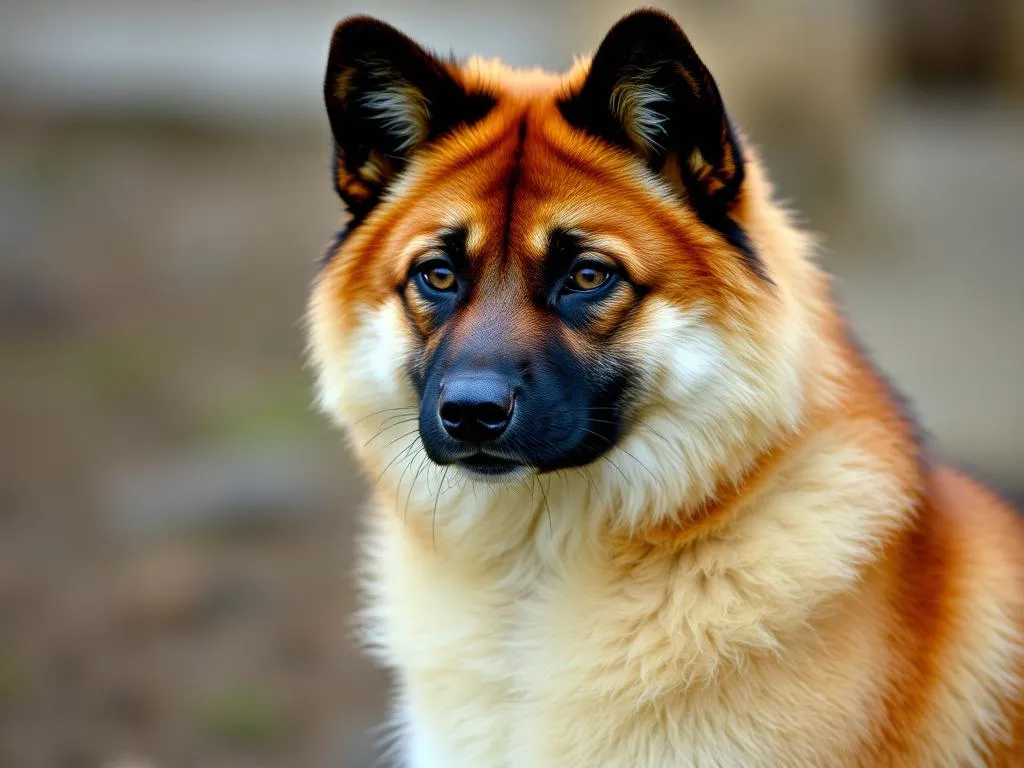
The Akita is a breed steeped in history and cultural significance, originating from the mountainous regions of Japan. Known for their dignified demeanor and loyal nature, Akitas have gained popularity in modern culture, appearing in films and becoming beloved family pets.
Understanding the original purpose of the Akita breed provides insight into their behavior and needs, which is crucial for potential owners. By exploring what Akitas were bred for, we can enhance our appreciation and care for these loyal companions.
Historical Background of Akitas
Origins in Japan
The Akita breed has its roots in Japan, specifically in the northern regions of the country. This breed is named after the Akita Prefecture, where it was initially developed. Historically, Akitas were bred for their endurance and strength, traits that made them well-suited for the harsh mountainous terrain of Japan. They were an integral part of Japanese culture, often featured in folklore and regarded as symbols of good health, happiness, and long life.
Development as a Breed
The development of the Akita breed took a significant turn in the early 20th century when selective breeding practices began to refine their characteristics. Influenced by the Japanese Imperial family, the Akita gained prominence as a noble breed. The famous story of Hachiko, an Akita who waited for his deceased owner at a train station for nearly a decade, contributed to the breed’s reputation for loyalty and devotion. This historical backdrop helps us understand the breed’s enduring qualities and the admiration it commands today.
Primary Functions of Akitas
Hunting and Guarding
Historically, Akitas were primarily bred for hunting large game, such as boar and deer. Their strong build, keen sense of smell, and tenacity made them exceptional hunting dogs. They were trained to track and corner game, showcasing their intelligence and physical prowess. In addition to their hunting abilities, Akitas served as guard dogs for families and properties. Their imposing stature and protective instincts made them excellent guardians, providing safety and security for their human companions.
Companion Dogs
As society evolved, the role of the Akita transitioned from working dogs to cherished family pets. Their loyalty and protective instincts endeared them to families, making them highly sought after as companions. This shift not only highlights the adaptability of the breed but also underscores the deep bond that can form between Akitas and their owners. Today, Akitas are known for their affectionate nature, often becoming integral members of their households.
Characteristics of Akitas
Physical Traits
The Akita is a large and powerful breed, typically weighing between 70 to 130 pounds and standing about 24 to 28 inches tall at the shoulder. They possess a sturdy build with a broad head and a strong neck. One of the most striking features of the Akita is their double coat, which can come in various colors, including white, brindle, and various shades of red. This coat not only provides protection against harsh weather but also adds to their majestic appearance.
Temperament and Behavior
Akitas are known for their unique temperament, often described as loyal, courageous, and aloof with strangers. They form strong bonds with their families, often displaying a protective nature. However, their independent streak means they can be stubborn, requiring consistent training and socialization from an early age. Proper socialization is essential to ensure that Akitas are well-adjusted and can thrive in various environments, including homes with children and other pets.
Modern-Day Roles of Akitas
Family Companions
In contemporary society, Akitas are increasingly popular as family pets. Their loyal and loving nature makes them excellent companions, and they often adapt well to home environments. While they require ample space to roam and play, they can thrive in various living situations, provided their exercise and mental stimulation needs are met. Many Akita owners find that their dogs enjoy participating in family activities, showcasing their affectionate and playful sides.
Working Roles
Beyond being family companions, Akitas have found roles in therapy and service work. Their gentle disposition and intelligence make them suitable for various therapeutic settings, where they provide comfort and companionship to those in need. Some Akitas are trained as service dogs, assisting individuals with disabilities and enhancing their quality of life. These modern roles highlight the versatility of the breed and their capacity to adapt to different environments and needs.
Caring for an Akita
Training and Socialization
Training and socialization are critical components of raising a well-adjusted Akita. Early training should focus on establishing boundaries and reinforcing positive behaviors. Since Akitas can be stubborn, employing techniques such as positive reinforcement and consistent commands is crucial. Socialization should begin at a young age, exposing them to various people, environments, and other animals. This exposure helps prevent behavioral issues and ensures that Akitas grow into well-rounded adults.
Health and Maintenance
Owning an Akita comes with specific health considerations. Common health issues within the breed include hip dysplasia, autoimmune disorders, and certain types of cancer. Regular veterinary check-ups and a balanced diet are essential to maintaining their health. Grooming is another important aspect of Akita care. Their double coat requires regular brushing, especially during shedding seasons, to keep it healthy and free from mats. Daily exercise is also vital; Akitas benefit from vigorous walks and play sessions to keep them physically and mentally stimulated.
FAQs about Akitas
Are Akitas good with children?
Yes, Akitas can be good with children, especially when they are socialized and trained from an early age. Their protective nature often extends to younger family members, but supervision is essential to ensure positive interactions.
How much exercise do Akitas need?
Akitas require a considerable amount of exercise—at least one hour of vigorous activity each day. This can include walks, playtime, and mental stimulation through training exercises or interactive toys.
What are the best training practices for Akitas?
The best training practices for Akitas include positive reinforcement techniques, consistency, and patience. Early socialization and obedience training are crucial for developing a well-behaved companion.
Can Akitas be left alone for long periods?
Akitas generally do not do well when left alone for extended periods. They thrive on companionship and can develop separation anxiety if left alone too often. It’s essential to provide them with mental stimulation and companionship when you are away.
Conclusion
The Akita breed carries a rich historical purpose that informs their characteristics and behaviors today. Originally bred for hunting and guarding, Akitas have evolved into loyal family companions and versatile working dogs. Understanding their needs and traits is vital for responsible ownership, allowing potential and current owners to appreciate the depth of this remarkable breed.
By embracing the historical significance of Akitas, we can foster a deeper bond with them and ensure they lead happy, fulfilling lives in our homes. Their loyalty and protective instincts make them not just pets but cherished members of our families.









